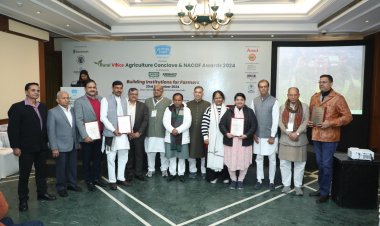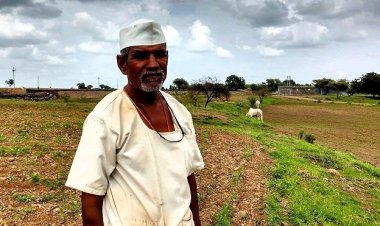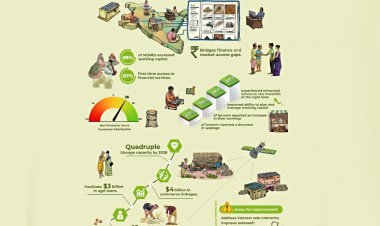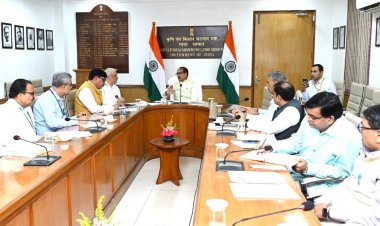Assembly elections in five states will decide the political impact of farmers and their issues
Whatever be the outcome of the Assembly elections in five states, it is bound to have a far-reaching impact on the politics, economy and agriculture-related policies of the country. The elections are crucial also because while they are being held in Punjab, the province which has been most successful in terms of farming, they are also being held in UP, the state with the highest population in the country, and Uttarakhand, which was once a part of it, and most of the population in these states depend on agriculture.
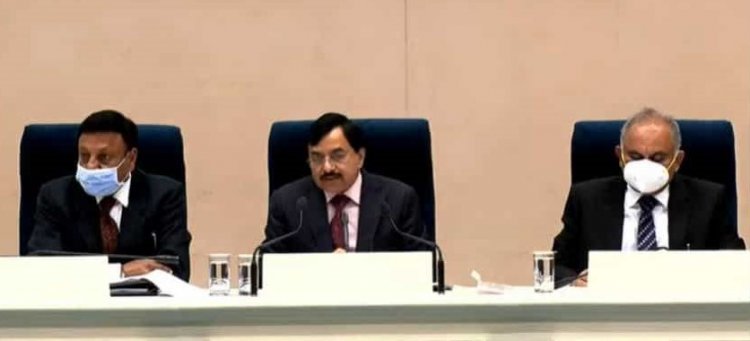
The Election Commission has announced the poll schedule for five State Assemblies. These elections are being held in a new environment and amidst new circumstances. On the one hand, the economy has been severely affected due to the Covid-19 pandemic for the last two years and is yet to come back on the rails. On the other hand, after several decades the country witnessed the largest-ever farmers’ movement from June 2020 to December 2021. The movement has had a big achievement because the government accepted the farmers’ most important demand and repealed the three new central farm laws.
Amidst this dual background, whatever be the outcome of the Assembly elections in five states, it is bound to have a far-reaching impact on the politics, economy and agriculture-related policies of the country. The elections are crucial also because while they are being held in Punjab, the province which has been most successful in terms of farming, they are also being held in Uttar Pradesh (UP), the state with the highest population in the country, and Uttarakhand, which was once a part of it. That issues related to farmers will have a direct impact on the Assembly elections in Goa and Manipur is difficult to say because the local issues there are somewhat different.
As far as the impact of Covid-19 on the economic situation is concerned, agriculture is the only sector of the economy that has remained almost untouched. It has grown by more than 3 per cent over the last two years. According to the First Advance Estimates of the Gross Domestic Product (GDP) that came two days ago, agriculture and allied sectors will grow by 3.9 per cent in the current year. Although the economy will grow by 9.2 per cent, the growth rate is one that comes after a 7.7 per cent decline last year. And this is what distinguishes agriculture from other sectors. The growth rate of agriculture and allied sectors has a higher base and thus 3.9 per cent growth implies a larger size. The rest of the economy, on the other hand, is yet to get back even to the 2019-20 levels.
This does not imply, however, that agriculture and rural economy are in too good a situation. The Systematic Assessment Survey on farmers released recently by the Central Statistics Office (CSO) makes it clear that the income from non-agricultural activities has increased more for the farmers in comparison to that from agriculture. That is, the characteristic of the rural economy is changing. Besides, the debt level has gone up for the farmers. Since the farmers are not earning well from their crops, they are getting angrier. This is why they launched a big movement against the three laws promulgated by the Union Government and the movement lasted for a year in spite of all odds, forcing the government to repeal the laws.
The laws did get repealed but the issue of farmers and the agriculture sector remains as it is. That is why these elections are crucial. Political parties will talk about their claims and promises in order to win the farmers’ votes. The Congress-led government in Punjab will make its claims. It even waived the farmers’ loans. However, not all farmers are happy as the policy allowed loan waivers only to a certain extent. It is obvious, however, that the farmers will have no grievances regarding wheat and paddy procurement because the two crops have witnessed record procurement there.
The government made no decision on the report of the committee it had formed for power subsidy to farmers. However, the recommendations of the committee were questioned, too, because not all members of the committee favoured these. The State Advisory Price (SAP) of sugarcane was increased significantly for the cane farmers and it differs from that in UP in the current crushing season. Besides, the Congress government in Punjab under ex-Chief Minister (CM) Capt. Amarinder Singh and present CM Charanjit Singh Channi both supported the farmers’ movement against the three new central farm laws. However, 22 of the 32 farmer groupings that were part of the movement have now formed Sanyukt Samaj Morcha and decided to contest the elections. All these issues will impact the elections.
As far as UP is concerned, the impact of the movement has been greater there in western UP and the Terai region. The Yogi Adityanath government of UP, too, had waived the farmers’ loans. But, contrary to all the claims being made, there are several issues in the state that would impact the farmers’ votes. For instance, the state government kept the SAP of sugarcane for the cane farmers, the strongest of the farmer lobbies, on freeze for three years and made only a marginal increase of Rs 25 per quintal in its last year just before the elections. Subsequently, the SAP became Rs 350 per quintal but it is less than the Rs 362 per quintal in neighbouring Haryana, which also has BJP rule. Farmers will bear this in mind.
There was a delay in cane price payments and, in spite of legal provisions, the cane farmers did not get any interest on the delayed payments. This may have a bearing on the elections. Besides, the power rates had been raised for the farmers that were reduced later just a few days before the elections were announced. This decision is an indicator of the BJP government’s worry and apprehensions that increased power rates may lead to electoral loss. Whether it was wheat or paddy, a large number of farmers had to sell these crops at much below the Minimum Support Price (MSP) as their government procurement was not in a good situation. However, the state government will try to cash in on the Rs 6,000 per annum that the farmers get under the Union Government’s Pradhan Mantri Kisan Samman Nidhi (PM-KISAN) scheme.
However, the electoral arithmetic of UP is not fully centred on farmers’ issues and this election, too, will not be an exception to this. Caste, religion and regionalism impact the results on a large scale in UP. But this cannot be the case either that the farmers’ movement, which has made the farmers in every part of the country conscious of their rights, will leave the farmers of UP untouched. Just as the farmers in the rest of the country have understood the significance of MSP, those in UP, too, are realizing it. Given this situation, farmers will certainly weigh the claims and promises of both the BJP and the opposition, and the BJP may have to suffer losses in a large part of the state thanks to the farmers’ resentment.
As far as Uttarakhand is concerned, the government formation there is largely determined by the plains of the state because this part has the number of seats necessary to decide the government. The farmers here are no different from those in western UP and the Terai region. The farmers’ issues are, therefore, certain to have an impact on the elections here.
The elections are imminent, and the farmers’ issues seem to be significant so far and have the potential to impact the results. In the days to come, voters will weigh the election manifestoes of the parties and the claims of the parties in power. It is a major fact that UP, Punjab and Uttarakhand are states with huge rural populations and agro-based economies. So, issues concerning agriculture will decide which way the election results go. But if the results do not go on to prove this, the farmers’ issues will also weaken after these elections, and so will the pressure created on the government by the farmers’ movement that lasted for more than a year.



 Join the RuralVoice whatsapp group
Join the RuralVoice whatsapp group


































